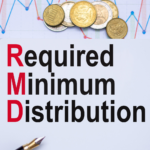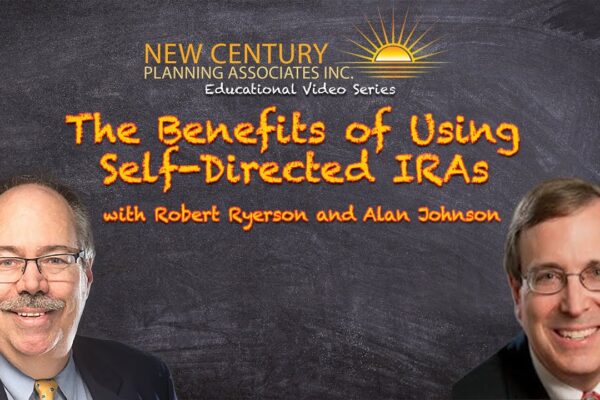Important Steps in the Retirement Planning Process
Planning for retirement is an important part of securing your financial future. But many people either do not have any sort of plan at all, or are simply not doing enough to ensure their financial security in their retirement. Retirement planning is similar to regular financial planning in many ways, although it requires longer-term thinking and thus more estimates and guesswork. Like any other financial plan, retirement plans should be able to evolve over time, changing and shifting with your financial situation.
If you are ready to start planning for your retirement, here are a few steps you need to take to establish the best plan for you.
Account for Longevity
 One of the steps that is often overlooked when creating a retirement plan is the issue of longevity. In order to plan properly, you must at least consider how long you and any dependents (for example, a spouse or an adult child) might live. It may sound a bit morbid, but the truth is that it is essential to helping you ensure you have enough to last. Try the Social Security Administration’s life expectancy calculator to obtain a reasonable estimate.
One of the steps that is often overlooked when creating a retirement plan is the issue of longevity. In order to plan properly, you must at least consider how long you and any dependents (for example, a spouse or an adult child) might live. It may sound a bit morbid, but the truth is that it is essential to helping you ensure you have enough to last. Try the Social Security Administration’s life expectancy calculator to obtain a reasonable estimate.
With advancements in medical treatment, people are living today longer than ever. Many end up draining their retirement savings early because they underestimated their lifespan—perhaps a welcome mistake! However, many people also fail to account for the cost of long-term care because they don’t think they’ll need it, or they mistakenly assume it is covered by Medicare. (It’s not.)
According to the US Department of Health and Human Services, about half of Americans turning 65 will need long-term services and supports (LTSS)—this includes people who will need long-term care in a facility as well as those who need in-home assistance with daily tasks like getting dressed, bathing, and eating. The department’s research also indicated that people turning 65 in 2016 would rack up about $138,000 in LTSS costs. Since women tend to live longer than men, they are more likely to require LTSS, as are people who live alone.
Consider Your Lifestyle
Once entering retirement, most people simply assume they will downsize their lifestyle. Generally speaking, the traditional advice was to assume that your monthly expenses during retirement will be around 70-80% of what you spent previously. But that assumption is not always realized, and in fact, it is often untrue, especially considering medical expenses and other costs like a mortgage that is not paid off. Look carefully at your own lifestyle now and consider what it costs you on a monthly basis to maintain it. If you truly think you’ll downsize, estimate those new monthly expenses as well.
However, be honest with yourself about whether you’ll actually be able to cut back, or whether you even want to. Perhaps you want to maintain your current lifestyle, or perhaps you want to travel extensively or purchase a vacation home. That’s something you’ll need to plan for if you want your retirement plan to work for you.
Think about Generating Income
 Though savings are certainly an important part of any retirement plan, one often-overlooked aspect is earnings. Think about how you’ll generate income in retirement. Investments can help you establish a revenue stream that will make your savings last longer. You might also consider taking on a part-time position to earn wages during the early years of your retirement. Many people find an abrupt retirement, from working full-time to not working at all, boring. They miss having a job in some capacity. Working a part-time job can ease you into retirement and provide some intellectual and social stimulation, in addition to generating extra income to help your savings last.
Though savings are certainly an important part of any retirement plan, one often-overlooked aspect is earnings. Think about how you’ll generate income in retirement. Investments can help you establish a revenue stream that will make your savings last longer. You might also consider taking on a part-time position to earn wages during the early years of your retirement. Many people find an abrupt retirement, from working full-time to not working at all, boring. They miss having a job in some capacity. Working a part-time job can ease you into retirement and provide some intellectual and social stimulation, in addition to generating extra income to help your savings last.
 Keep in Mind Your Risk Tolerance
Keep in Mind Your Risk Tolerance
Risk tolerance is an important part of assessing your retirement investment portfolio. In general, experts advise that the younger you are and the further from retirement, the more risk you can afford to take on in your investments. Conversely, as you start to approach retirement age, you may want to reduce your risk exposure by adjusting your portfolio. The idea is that you can afford to take greater risks when you’re younger because you’ll have more time to recover from any mistakes or downturns; when you’re older, you won’t have time to build back after a significant loss.
That said, risk tolerance is an extremely individual aspect of investing, one which you’ll need to determine for yourself, in consultation with a professional financial advisor. Remember that risk tolerance can change from year to year, and it is completely acceptable to adjust your portfolio depending on your financial health. When you’re doing well financially, you can afford to take on more risk in your investments when compared to other years when things are tight.
Start Early
No matter your financial situation, your best bet for ensuring financial stability throughout your retirement is to establish and start contributing to a plan as early as possible. Let time work for you, rather than against you, as many people who start saving too late discover. The earlier you begin to save, the better—thanks to compound interest, your investments will generate exponentially more money the more time you give them to grow. Start saving and investing for your retirement today!
Author
Robert Ryerson
Although Robert M. Ryerson completed all the necessary requirements to earn bachelor of arts degrees in both English and economics at Rutgers University, college policy at the time prohibited the issuance of dual degrees. As a result, he graduated from Rutgers with a single bachelor of arts in economics before finding employment as a stockbroker with Shearson Lehman American Express in New York City 1984. Robert M. Ryerson has since established himself as a respected estate administrator and legacy planner. In addition to his economics degree from Rutgers, Mr. Ryerson holds several professional designations including Retirement Income Certified Professional (RICP)®; Certified In Long Term Care (CLTC)®; Certified Financial Fiduciary (CFF)®, and Certified Identity Theft Risk Magenament Specialist (CITRMS)®. He has shared his knowledge on the subject of identity theft as the author of the book What’s The Deal With Identity Theft?: A Plain-English Look at Our Fastest Growing Crime. He has also covered identity theft issues directly for students as the instructor of the adult education course Understanding Identity Theft: Our Fastest Growing Crime.






